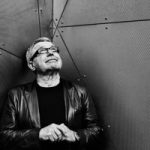Daniel Libeskind
Daniel Libeskind was born and spent his childhood in Poland in 1946 with his family of Jewish origin who survived the holocaust. There Daniel cultivated a passion for music and after finishing his studies he moved to Tel Aviv, Israel. Thanks to the winning of a scholarship offered by the America-Israel Cultural Foundation, the boy moved to New York where, a few years later, he enrolled in the faculty of architecture.

Daniel Libeskind
Through courses held in London, Daniel Libeskind starts teaching in various London schools but also in the United States and Japan.
In the 1978 comes his first project, an inclined building that goes against the geometric rules, on the occasion of a competition for the redevelopment of a Berlin area.
After a few years Daniel also arrives in Italy, specifically in Milan where he gives life to an experimental laboratory. The architect defines the peninsula as a beautiful country even if it is not possible to carry out his work in it. Immediately after this stay in Italy he decides to accept to work in Los Angeles at the Center for the Arts and the Humanities.
From this moment on, Daniel Libeskind began his career as an archistar who led him to become famous all over the world, creating works that are modern but at the same time important on a historical and cultural level.
Design philosophy and prevailing features of Daniel Libeskind
Architect Daniel Libeskind has his own design philosophy that is based on continuous research to never create something foregone.
It defines architecture as a language of communication, through which unknown and mysterious aspects can be reached. According to Daniel, this art is always about memory, especially when projects are carried out that have to do with tragedies that have already occurred.
Libeskind, with regards to this aspect, has created two works related to history, the Jewish Museum in Berlin and Ground Zero in New York.
The architect interprets the space differently than the others.
In fact, he considers this dimension as something social and cultural, also linked to the imagination and the invisible. Space is therefore something that goes beyond what can be seen and for this very reason Daniel creates them to create particular emotions and sensations.
The architect's art is defined by himself as a civil art that is inspired by time and traditions. Precisely for this aspect it opens new and infinite horizons.


